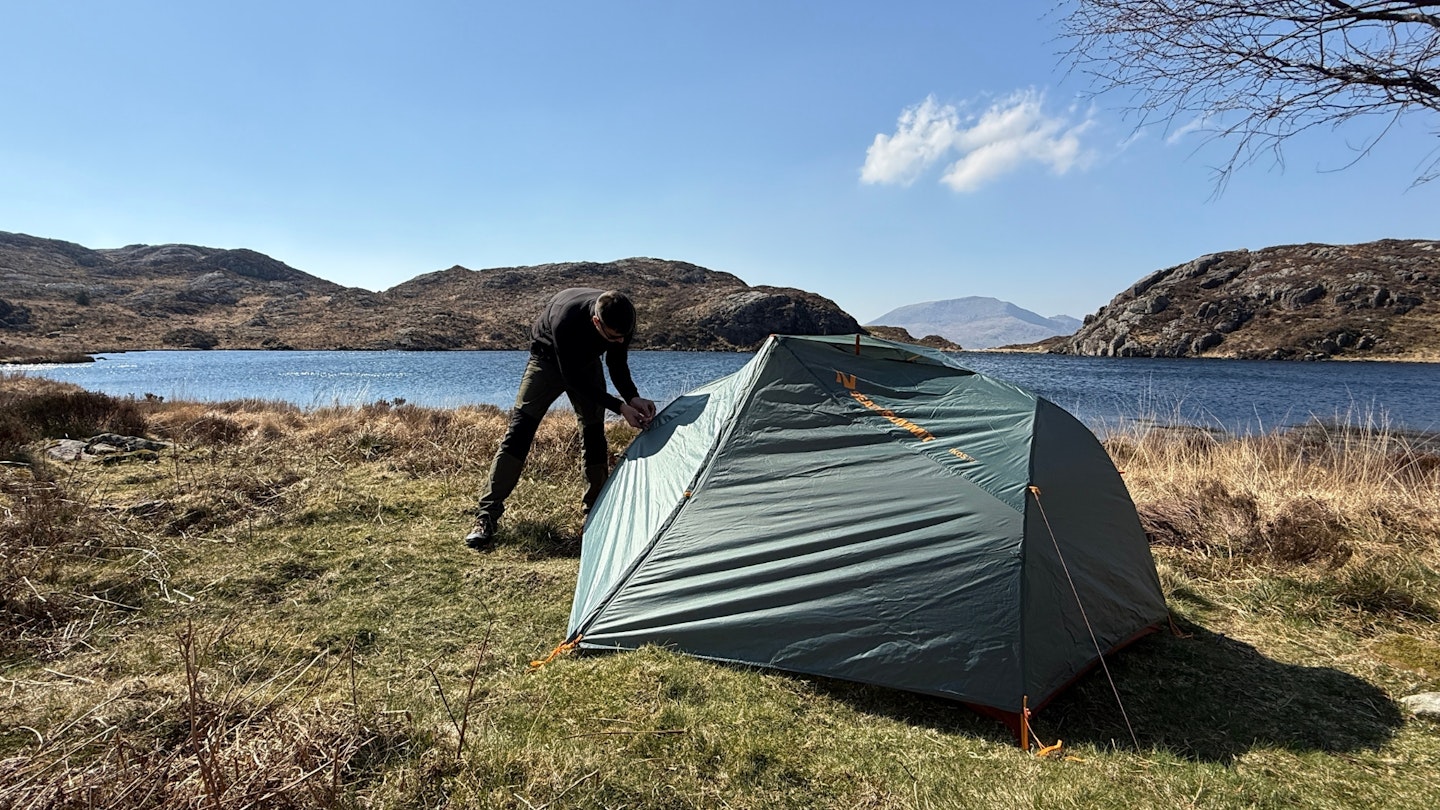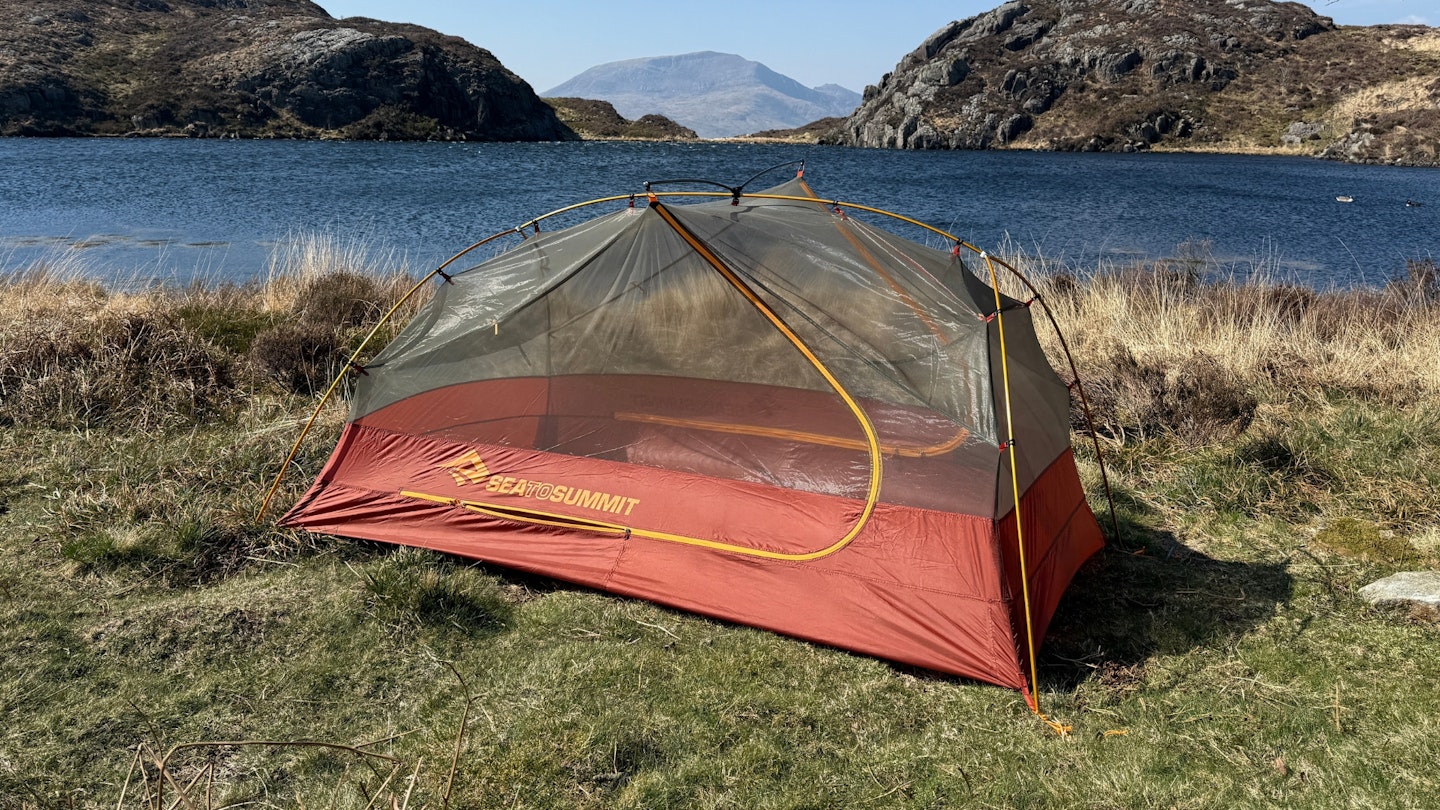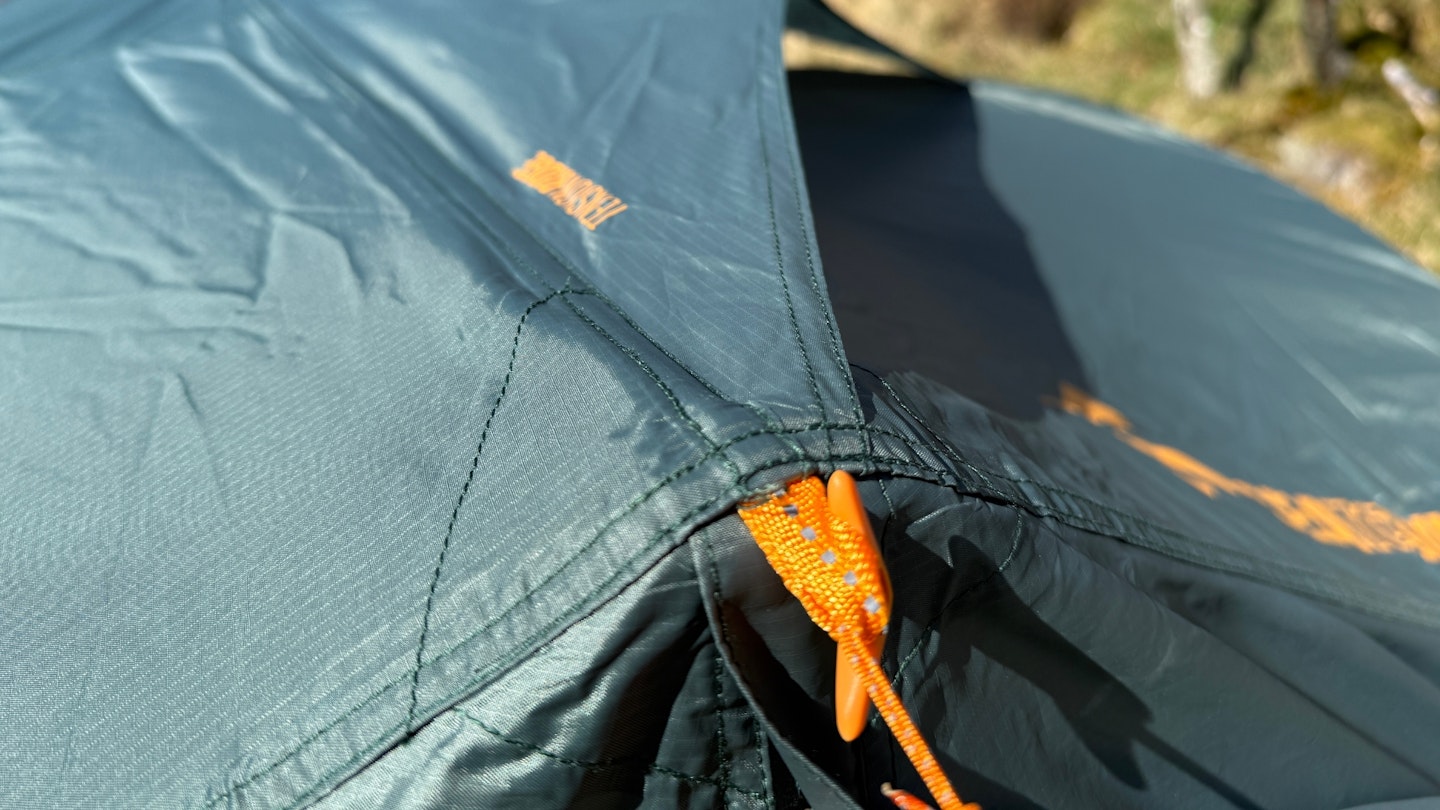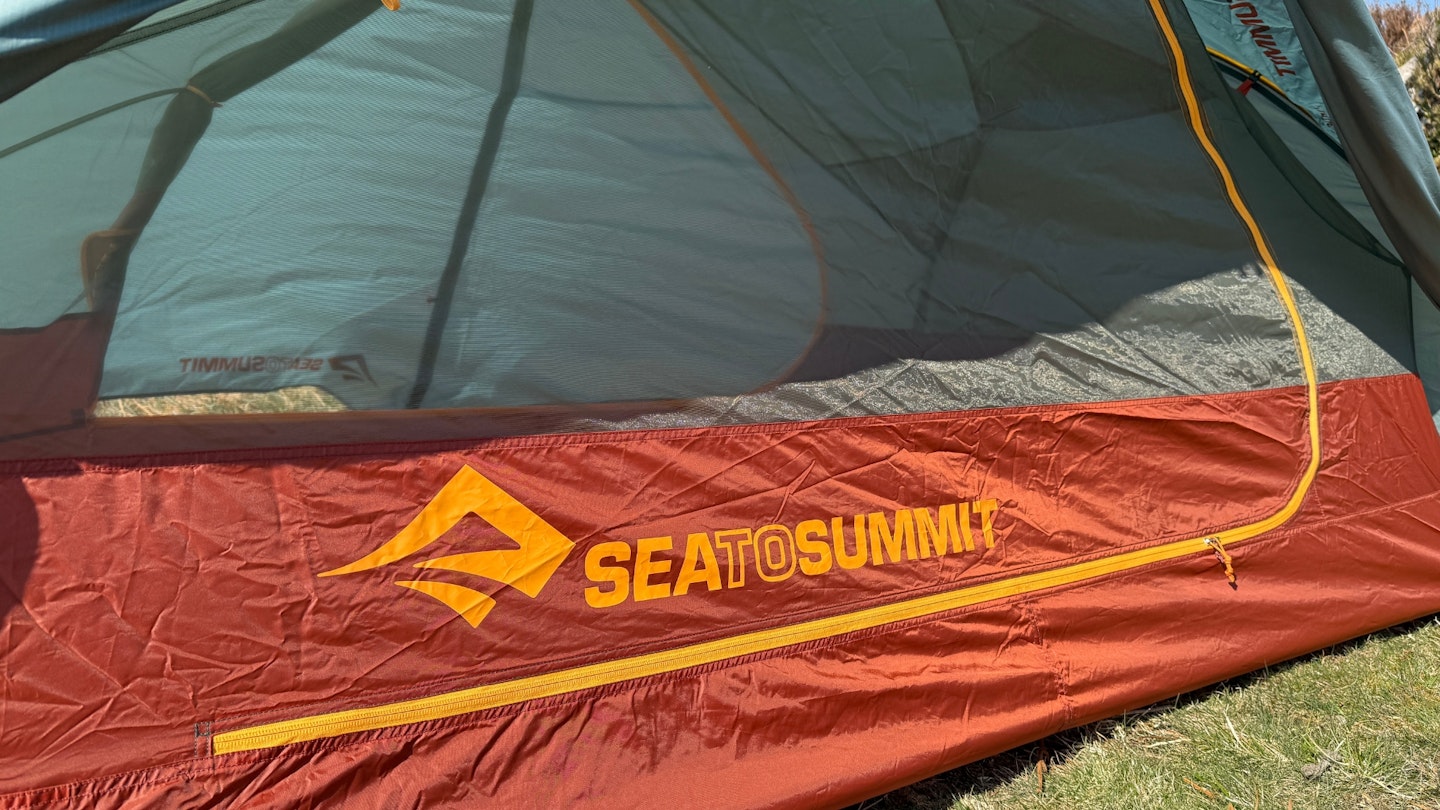The Ikos TR2 is the most affordable of Aussie brand Sea to Summit's tent range, though it's not exactly a budget buy.
Released in 2023, it hasn't quite made the same splash as the brand's higher end Alto and Telos models, perhaps because it is aimed at less demanding users, who don't get as excited (or vocal) as committed outdoor enthusiasts when it comes to new gear.
That's a shame, since this is a practical and robust tent with the same premium feel and first-class build quality as its more expensive stablemates.
It offers a good balance of durability, interior space and user-friendliness, in terms of both easy pitching and handy features. The biggest drawback, aside from its fairly high price, is weight – at 2.37kg (4lbs 12oz) packed, it’s no featherweight.
Then again, it’s not designed for gram-counting ultralighters. The Ikos is best suited to campsite use, though we'd definitely recommend it as a wild camping tent if you're not constantly carrying it.
Pros
- Freestanding design is stable and easy to pitch
- Durable, robust materials and components throughout
- Two large doors and vestibules for easy access and gear storage
- Great ventilation options for humid nights
- Good floorspace and superb headroom for two campers
- Versatile pitching options
Cons
- A bit heavy and bulky for backpacking
- Expensive for its target market
- Tension Ridge design exposes vents to rain
- Tight fly attachments can feel like you’re stressing the fabric and poles during setup
- Only 4 guylines included
| RRP: | £440 / $449 |
| Internal dimensions: | 215 x 135cm (L x W) |
| Peak height: | 105cm |
| Packed size: | 50 x 17.5cm |
| Packed weight: | 2.37kg/4lbs 12oz |
| Doors: | 2 |
| Porches: | 2 |
| Design type: | Freestanding |
| Materials: | Fly and floor: 68D ripstop polyester (1800mm HH fly and 4000mm HH floor), 20D polyester mesh inner, DAC MX aluminium alloy pole set. |
In terms of overall shape and structure, it’s very similar to the brand’s lightweight Telos TR2 tent but uses heavier and more robust fabrics and a chunkier DAC MX aluminium pole set.
You still get the same unique wishbone style pole structure, known as Tension Ridge architecture, which delivers excellent headroom. When you combine this with the generous floorspace, it ensures that overall liveability is amongst the best in its class.
It's also brilliantly ventilated, which makes this a great tent for summer camping on hot, humid nights. The flipside is that it’s a bit vulnerable to wind-driven rain in poor weather.
Shape, structure, pitching and internal liveability
Just like other tents in the Sea to Summit range, the Ikos features the brand’s signature Tension Ridge pole design. This architecture was developed by Jake Lah, noted tent designer and founder of tent pole manufacturer DAC.
The basic structure consists of a hubbed poleset with two arches at each end, plus a wishbone-style spreader bar in the centre. This bends the sidewalls up into the air as opposed to down towards the ground.
The result is an airy, expansive feel that few tent designs we’ve tested can match (though NEMO's new Dagger Ridge comes close). If you hate cramped and claustrophobic tents, the Ikos’ liveability is a real selling point.
It's nice and roomy for two. The rectangular floor area, symmetrical layout and near-vertical walls maximise useable space. The two inner doors are fitted with extended two-way zippers and elasticated door keepers, ensuring convenient, fuss-free access.
Meanwhile, the matching vestibules are triangular in shape and are a good size for stashing boots, packs and other camping gear. They can also be fully rolled back in warm, dry weather for great views, cooling airflow and even easier access.
In terms of dimensions, the Ikos TR2 has a specified internal floor area of 215 x 135cm (L x W). Peak height at the apex is 105cm, which is excellent (in our 2025 group test, only NEMO’s Dagger Ridge gave more vertical headroom, at 109cm).
But again, the Ikos’s secret sauce is that Tension Ridge wishbone spreader bar, which means that the actual headroom inside the tent is truly expansive. The height at the doors is well over a metre, so it’s easy to clamber in and out.

The Ikos TR2 is quick and easy to pitch, thanks to that all-in-one hubbed pole system. However, the components are engineered for versatility, which means that you can pitch the Ikos in multiple configurations to suit the conditions – inner first (‘classic mode’), fly only, inner only, partial fly mode or dry set-up.
The latter ensures that in wet weather you can set the fly up first and take it down last to keep your inner dry, thanks to clever Quick Connect feet that match the diameter of the pole ends.
Just like its sister tent, the Sea to Summit Telos, the Ikos also has a ‘Hangout mode’, which allows you to convert the tent fly into a semi-open shelter when combined with either a pair of adjustable hiking poles or the brand’s Hangout Mode Pole Set.
On the campsite, you could use it as a shady shelter or a group mess tent, rather than having to pitch an extra tarp or gazebo. It’s not the sturdiest, so we wouldn’t recommend it for breezy conditions, but it’s still an innovative addition to the tent’s plethora of pitching options.
The only design elements we’re not so keen on are the reinforced tabs used to attach the fly sheet to the wishbone spreader bar, which are a tight fit – it feels like you’re stressing both the fabric and the pole, though hopefully both have been engineered to withstand the forces exerted.
There are also numerous slightly fiddly Velcro tabs to attach the fly to the frame, though these do help ensure a taut pitch and add some structural integrity. Also, our test sample only included four guylines, two of which were very short.
Waterproofing

The fly sheet is 68-denier ripstop polyester, which doesn't provide the same strength-to-weight ratio as higher spec sil-nylon fabrics but is easy to maintain, robust, durable, and doesn't sag when it gets sodden or saturated with rain.
Additionally, the floor and fly have a Polyether Polyurethane (PeU) coating, which is known for its excellent long-term water repellence. The flysheet is also cut low to the ground, ensuring excellent all-round coverage.
The caveat to this tent’s performance in wet and windy weather concerns the Tension Ridge design. Though it has several upsides when it comes to liveability and ventilation (see ‘condensation’ below), it leaves the tent a bit exposed to heavy, wind-driven rain.
Even with the vent opening zipped closed, on test in the mountains of North Wales, we found that water can occasionally creep through the flysheet and drip down onto the inner. A more water-resistant zipper or perhaps a Velcro tab to enable you to completely shut the upper vents may help here.
Of course, you can mostly eliminate the issue if you position the tent so that the vents face away from the wind (they’re only placed on one side of the ridge pole), but that’s not always easy in shifting, swirling wind.
At least the doors are fitted with external storm flaps, which minimise leakage into the vestibule. The Tension Ridge spreader bar also provides enough overhang to stop too much water from dripping into the inner if you need to get out when it’s raining.
Condensation

As noted above, the Tension Ridge spreader bar enables the inclusion of an oversized upper vent in the fly sheet, with a half-moon zippered panel underneath. This ensures superb ventilation, and the tent never feels stuffy.
There’s also a large gap between the tent inner and the fly, which further helps to minimise condensation build-up. On top of that, the Ikos also features so-called ‘Baseline vents’ at each corner of the fly, which can be rolled up and tied off to allow air to enter from below, without exposing the vestibules or the inner.
Meanwhile, the inner tent has an extended bathtub floor but is largely comprised of airy mesh, which ensures minimal moisture build-up (though on the flipside the tent can feel a little draughty in more exposed locations).
However, for humid nights that require a range of venting solutions, the tent’s overall design is one of the best we’ve tested, offsetting the stuffier sensation that usually comes with polyester tents.
Wind protection
The Ikos’s robust fabrics combined with its sturdy DAC MX poles makes for a very weatherproof shelter – though in gusty weather or exposed pitches, you’d be wise to add a couple of guylines for maximum stability.
We found that the steep endwalls in particular are a bit vulnerable to buffeting, as is that exposed top vent. It’s worth noting that although there are six guy-out points in total, only four lines are included as standard with the tent (and two are very short).
They do have toggles to make it easy to attach and detach them from the guy-out points as needed though, so you can reposition the guylines according to prevailing wind direction.
Weight and packed size

This isn’t the lightest tent around. Ultralighters will probably be deterred by the Ikos TR2’s 2.37kg packaged weight, and even the tent’s minimum trail weight comes in over that critical 2kg mark. Then again, most weight-conscious campers intrigued by Sea to Summit will be looking at the brand’s higher-tier alternatives like the excellent (but pricier) Alto or Telos.
This points to one of the Ikos’ biggest weak points – despite being marketed as more of a beginner backpacking tent than other Sea to Summit models, it still isn’t cheap. The bottom line is that most casual campers won’t be prepared to spend £400 on a tent, and more committed users with that kind of budget will probably want something lighter and more packable than the Ikos.
Similarly, it’s relatively bulky when packed, at 50 x 17.5cm. That’s on the larger side for a backpacking tent (along with the MSR Elixir 2, it was the chunkiest 2P tent in our 2025 group test). Nor does it come with the same space-saving FairShare storage sack system as the Alto or Telos ranges.
That said, the included stuff sack features three side compression buckles that allow you to cinch things down a bit. On test, we had no issues carrying the tent or fitting it in a 60L pack.
And this is a genuine two-person tent, since it’s roomy enough to share with a partner or friend, without feeling too cramped. It’s also a little lighter than best-selling rivals like the MSR Elixir 2 and Tindheim 2, as well as the Wild Country Helm Compact 2, which all use similar spec high-denier polyester materials.
Features

This is a very well-made tent. As well as sturdy fabrics, it is supplied with good quality poles, smooth-running zippers and excellent Y-beam stakes. You also get high quality components, including single pull tensioners with reinforced webbing and anodised aluminium hardware.
The Ikos TR2 also offers excellent interior organisation, which is no surprise for a tent that is intended to see a lot of campsite use.
The inner is equipped with two triangular storage pockets at the head end, plus two door pockets and a mesh gear loft that provides a good place to stash head torches, camp lanterns or other gear that you’d want to keep off the floor of the tent.
Our only gripe with the storage layout is that the pockets are all located at one end of the tent. If you like to sleep top-to-tail, one camper gets a bit short-changed when it comes to accessible storage.
Verdict
This tent delivers excellent comfort, space and ventilation in a durable, high-quality package that’s perfect for casual camping or short backpacking trips. While not the lightest or cheapest, its thoughtful design and roomy interior will suit campers who prioritise comfort over weight savings.
If your top priority is plenty of room, check out our roundup of the best family tents.
Shop this product
About the author

Matt Jones is a freelance journalist based in the heart of Snowdonia National Park, he’s a vastly experienced gear tester and self-confessed outdoor kit geek. Matt’s been one of our main gear testers for the last couple of years and is the first person we call with any complicated kit queries that need in-depth and forensic analysis.












